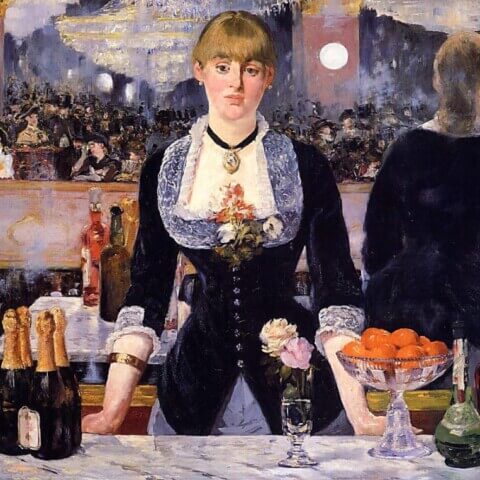Title: “”Exploring Paul Gauguin’s Haymaking in Brittany: A Masterpiece of Artistic Innovation””
Year Painted: 1888
Paul Gauguin’s “”Haymaking in Brittany”” is a masterpiece that showcases the artist’s unique style and profound connection with nature. Painted in 1888, this remarkable artwork captures the essence of the picturesque region of Brittany, France, while pushing the boundaries of artistic conventions.
Gauguin’s exploration of color and form in “”Haymaking in Brittany”” is truly exceptional. The painting depicts laborers engaged in the arduous task of haymaking amidst golden fields. Vibrant colors and bold brushstrokes bring the scene to life, infusing it with a sense of energy and rural tranquility. Gauguin’s unconventional composition, characterized by flattened perspective and innovative color choices, sets this painting apart and reflects his desire to break away from traditional artistic norms.
The year 1888 marked a significant turning point in Gauguin’s career. Frustrated by the limitations of Impressionism, he sought new artistic avenues and found inspiration in the rustic landscapes of Brittany. Gauguin was drawn to the region’s untamed beauty, rural traditions, and its people who lived close to the land. In “”Haymaking in Brittany,”” he masterfully captures the essence of this environment, depicting a scene that is simultaneously authentic and poetic.
What makes “”Haymaking in Brittany”” truly special is Gauguin’s ability to convey his emotional response to the subject matter. Through his deliberate brushwork and intense color palette, he transports the viewer into the scene, inviting them to experience the sights, sounds, and even the smells of the hayfields. Gauguin’s deep connection with nature and his desire to express the spiritual and emotional aspects of the human experience are evident in every stroke of this painting.
Furthermore, “”Haymaking in Brittany”” exemplifies Gauguin’s ongoing exploration of symbolism and the use of art as a means of personal expression. The laborers toiling in the fields can be seen as allegories for the human condition, highlighting themes of hard work, simplicity, and the cyclical nature of life. Gauguin’s artistic vision transcends mere representation, delving into the realm of universal truths and existential contemplation.
Today, “”Haymaking in Brittany”” is regarded as one of Gauguin’s most significant works. Its impact on the art world cannot be overstated, as it influenced subsequent generations of artists and paved the way for the development of new artistic movements. This painting stands as a testament to Gauguin’s visionary approach, his willingness to challenge artistic conventions, and his ability to capture the essence of a specific time and place.
In conclusion, Paul Gauguin’s “”Haymaking in Brittany”” is a remarkable painting that exemplifies his innovative style and profound connection with nature. Painted in 1888, this masterpiece showcases Gauguin’s unique approach to composition, color, and form, making it a truly special and influential work in the history of art.
At our art gallery, we take pride in offering comprehensive global shipping to our esteemed clientele. We understand the significance of your art acquisitions and the need to transport them with utmost care. Hence, we are committed to delivering your chosen paintings to any address worldwide and free of any additional charge.
Our reliable courier service partners are experienced in handling precious art pieces and ensure that your painting reaches you in pristine condition. We offer fully insured, door-to-door delivery, providing you with peace of mind that your artwork is protected during transit.
Moreover, to accommodate your unique framing preferences, we offer the distinctive service of sending your purchased artwork directly to any framer across the globe. This enables you to have your painting framed locally by your trusted framer, reducing the risk of damage during transportation.
Regardless of your location or your framer’s, we strive to make the process as seamless as possible. It is our goal to provide exceptional service that caters to your needs and ensures the safe delivery of your valuable artwork.
We invite you to experience our hassle-free, worldwide shipping service, which is aimed at delivering your prized art pieces safely and efficiently, wherever you may be.
Similar paintings
Join our newsletter
Signup for our newsletter and receive our inspiration guide and 20% discount on your first order!









